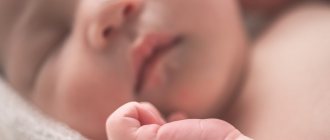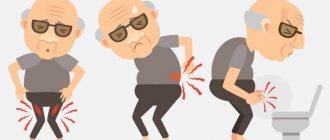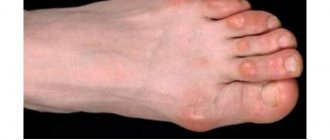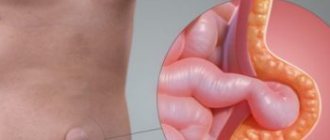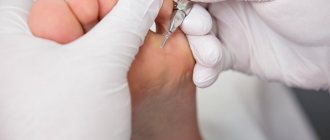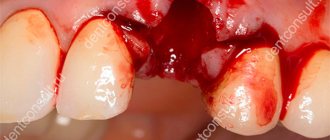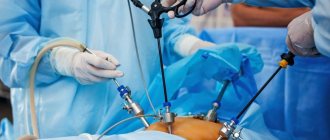General information
Molluscum contagiosum in children is noted as a pathology in the International Classification of Diseases (ICD-10) under code B08.1.
The chronic form of the disease in adolescents is a reason for delaying or sometimes preventing admission to military service. With a strong immune system, the disease goes away on its own after 3-6 months. If the immune system is weak, if left untreated, the pathology becomes chronic. Treatment of molluscum contagiosum in children, if started on time, is generally completed successfully.
The prognosis is favorable, complications and relapses are rare. It is easy to cope with the disease - it is important to strengthen children's immunity.
Similarities with other diseases
Molluscum contagiosum consists of a huge number of elements. This is why it is very easy to confuse it with other skin diseases.
These include:
- Genital warts;
- Flat warts;
- Vulvar micropapillomatosis;
- Hyperplasia of the sebaceous glands;
- Pearly penile papules;
- Syringiomas.
If a single large element is detected, differential diagnosis is made with keratoacanthoma, basal cell and squamous cell skin cancer.
Symptoms of molluscum contagiosum
After the virus enters the body, it can take from 2 weeks to six months before the disease manifests itself.
The pathology is characterized by rashes that look similar to ordinary flesh-colored papules (pimples). The seals resemble nodules or subcutaneous balls. In shade they are almost the same as the main color of the skin, although they may be slightly whiter. Pearl colored top. As the nodule develops, a depression appears in the center, resembling a “navel” in appearance. Pimples can be single or merge into groups. They are located mainly on the face, on the skin of the upper torso. Less common on the legs, thighs or buttocks. If you crush the bottle, a dry, curdled mass will come out of it.
It is impossible to say for sure why molluscum contagiosum is dangerous in a child. Rashes do not cause problems for children. They do not itch, do not cause pain, do not fester or become inflamed. Secondary infection and infection can only occur by squeezing out the contents of the blisters, so it is better not to do this and not to allow the child to scratch the rash.
Diagnosis and treatment of STDs
July 21, 2019
AIDS
Causative agent: human immunodeficiency virus. Incubation period: 1 - 3 months. Symptoms: a complex of diseases that occur in a person with HIV against the background of low immunity. Treatment outcome: incurable, carrier of the virus, death on average after 10 years.
Hepatitis C
Pathogen: hepatitis C virus. Incubation period: 7 weeks (3-20 weeks). Symptoms: liver damage Treatment outcome: chronic hepatitis (60-70%), carriage (20-30%), recovery (20%).
Hepatitis B
Pathogen: hepatitis B virus. Incubation period: from 30 days to 6 months (most often - 60-120 days). Symptoms: In typical cases, hepatitis B begins with fever, weakness, joint pain, nausea and vomiting. Symptoms such as dark urine and discolored stool are also possible. Rashes may appear, the liver and spleen may enlarge. Jaundice is uncommon for hepatitis B. Liver damage from hepatitis B can be extremely severe and in severe cases lead to cirrhosis and liver cancer. Treatment outcome: chronic hepatitis, carriage, recovery. Prevention: 3-fold vaccination.
Papillomavirus
Pathogen: Human papillomavirus (HPV) Incubation period: from 3 months to several years Symptoms: In the vast majority of people infected with HPV (of any type), it does not manifest itself in any way. The virus is under the control of the immune system. Genital warts occur in only 1-2% of people infected with “low-risk” HPV. Their occurrence and possible further relapses are associated with a weakening of general and local immunity. Pink or flesh-colored warty formations appear on the genitals. The size of the elements is from 1 mm to several centimeters. The rash may grow, gradually taking on a cauliflower-like appearance. In men, genital warts most often occur on the glans penis, crown of the glans, frenulum of the foreskin and inner layer of the foreskin. The virus is carcinogenic. Outcome of treatment: recurrent course, incurable.
Genital herpes
Causative agent: herpes simplex virus: HSV-1 and HSV-2. Incubation period: 2-10 days Symptoms: - itching, burning, pain - small blisters filled with clear liquid. The blisters burst with the formation of painful red ulcers - herpetic urethritis Treatment outcome: recurrent course, incurable.
Tuberculosis of the genitals
Pathogen: Mycobacterium tuberculosis - Mycobacterium tuberculosis, Mycobacterium bovis. Incubation period: ? Symptoms: Pain is localized depending on the lesion - in the ovary area or lower abdomen, urination may be difficult. General signs of intoxication of the body: fatigue, sweating, low-grade fever. Treatment outcome: incurable.
Hepatitis G
Pathogen: hepatitis G virus. Incubation period: 2-26 weeks Symptoms: may be absent Treatment outcome: chronic hepatitis (36%), carriage, recovery.
Hepatitis TTV
Causative agent: TTV hepatitis virus. Incubation period: ? Symptoms: unknown. Treatment outcome: unknown.
Cytomegaly
Pathogen: cytomegalovirus (a type of herpes virus). Incubation period: from 7 to 30 days (usually 7-10 days). Symptoms: - Acute respiratory disease (acute respiratory disease) - Multiple damage to internal organs - Inflammation of the genitourinary system Treatment outcome: incurable.
Candidiasis (thrush)
Pathogen: yeast-like fungi Candida albicans and less commonly other fungi. Incubation period: 10-20 days Symptoms: The most striking symptom of the disease is the appearance of thick mucous white-pink discharge from the urethra with stringy white threads. There may also be discomfort in the urethra when urinating. General health rarely suffers. Candidal urethritis is often accompanied by balanoposthitis with characteristic cheesy spots on the glans penis and the inner layer of the foreskin. Treatment outcome: recovery, less often relapse.
Syphilis
Pathogen: Treponema pallidum. It can exist in 4 forms - spiral, granular, cystic and L-form, which causes various clinical variants of the disease. Incubation period: on average 3 weeks (21 days), under the influence of antibiotics taken during the incubation period it can extend to 3-6 months. Symptoms: Primary syphilis is manifested by chancre, often genital, with accompanying lymphadenitis. Extragenital and atypical primary lesions may occur. It begins 3-4 weeks after infection and lasts 5-6 weeks. The main signs of syphilitic chancre: - erosion (85%) or ulcer (15%) at the site of introduction of treponema pallidum - regular round or oval outlines with clear, dense, roller-like raised infiltrated edges - scanty serous discharge and a flesh-red bottom - upon palpation ( palpation) a compaction of dense elastic consistency is determined at the base (hence the name - chancre). Treatment outcome: Recovery or carrier state (seropositivity).
Gonorrhea (gonorrhoea)
Pathogen: gonococcus (Neisseria gonorrhoeae). Incubation period: from 2 to 5 days Symptoms: yellowish-white discharge from the urethra, pain when urinating. Treatment outcome: recovery.
Mycoplasmosis
Pathogen: mycoplasmas Mycoplasma hominis and Mycoplasma genitalium. Incubation period: from 4 to 25 days (usually 7-14 days). Symptoms: May be unnoticeable. Mucous discharge from the genital tract, discomfort when urinating, itching, mild pain in the lower abdomen. In advanced cases, chronic inflammation of the bladder, kidneys, and prostate gland occurs. Treatment outcome: Recovery.
Ureaplasmosis
Pathogen: ureaplasma Ureaplasma parvum and Ureaplasma urealyticum. Incubation period: on average 10-14 days. Symptoms: either asymptomatic or urethritis (inflammation of the urethra). Treatment outcome: Recovery.
Chlamydia
Pathogen: chlamydia (Chlamydia trachomatis). Incubation period: 7 - 21 days. Symptoms: discharge from the urethra (most often transparent, scanty), pain when urinating (often mild). Treatment outcome: Recovery.
Trichomoniasis
Pathogen: Trichomonas vaginalis. Incubation period: 5-15 days Symptoms: The disease begins with the appearance of a characteristic itching in the area of the head of the penis when urinating. A little later, the itching spreads to the entire urethra, and scanty whitish or gray foamy discharge from the urethra appears. In this case, streaks of blood may appear in the sperm (hemospermia). Treatment outcome: Recovery
Bacterial vaginosis (gardnerellosis)
Pathogen: Gardnerella vaginalis, Mobiluncus Incubation period: 7-10 days. Symptoms: In men, gardnerella primarily causes urethritis. With Gardnerella urethritis, the discharge from the urethra is gray, watery, and has an unpleasant “fishy” odor. Their number is insignificant. Other manifestations include burning, itching, or simply unpleasant sensations when urinating, which are common for urethritis. NB! There may be no symptoms. Treatment outcome: Recovery.
Bacterial urethritis/prostatitis
Pathogen: Pseudomonas aeruginosa, Staphylococcus, Group B Streptococcus (Streptococcus agalactiae), Proteus spp, Enterobacteriaceae: Escherichia, Klebsiella, Enterobacter, Serratia, Hafnia, Salmonella, Edwardsiella, Citrobacier, Providencia . Incubation period: ? Symptoms: inflammation. Treatment outcome: Recovery.
Molluscum contagiosum
Pathogen: Molluscovirus hominis virus. Incubation period: from several weeks to 4-6 months Symptoms: The disease manifests itself as pearly white or pink shiny nodules with an umbilical depression in the center. The size of the elements is from 1 mm to 15 mm. Treatment outcome: Recovery.
Scabies
Causative agent: scabies mite Sarcoptes scabiei. Incubation period: The incubation period averages 8-12 days, but can range from several hours to 6 weeks, it all depends on the number of invading mites and the reactivity of the body. Symptoms: The first symptom of the disease is itching, which appears when parasites invade and worries mainly in the evening and night hours, since this is the time when the female scabies mite is most active. When the clinical picture of scabies develops, the main symptom of the disease is the scabies tract, which the female lays at the border of the stratum corneum and granular layer of the epidermis. A typical scabies burrow looks like a whitish or dirty-gray line, slightly rising above the skin level, 0.5 to 1 cm long. At the anterior end of the burrow, you can see a female mite visible through the stratum corneum in the form of a black dot. Treatment outcome: Recovery.
Pediculosis pubis (phthiriasis)
Pathogen: Pubic louse, or louse (Phthirus pubis). The parasites have a dirty yellow, gray-brownish color, the size of the male is about 1 mm, the female is 1.5 mm. Lice are the source of human infection with epidemic typhus and relapsing fever. Incubation period: ? Symptoms: - itching, accompanied by the appearance of scratching and bloody crusts - detection of larvae and mature lice on the scalp and clothing, as well as nits, the number of which is most significant - the appearance of erythema and papules ("papular urticaria") in places where lice suck blood - dermatitis and eczematization of the skin during a long course of pediculosis and phthiriasis - the appearance of bluish spots (macula coerulea) in places where lice suck blood. Treatment outcome: Recovery.
Urogenital amoebiasis
Pathogen: Entamoeba histolytica and Amoeba dysentery. Incubation period: from 1-2 weeks to 3 months. Symptoms: Two forms of amebiasis can be transmitted sexually: 1. Intestinal (with annilingus). Deep ulcers form on the walls of the gastrointestinal tract, the bottom of which festers. 2. Skin (during anal intercourse). Warty ulcerations in the genital area and anus, called amoebomas. Treatment outcome: Recovery.
Urogenital shigellosis
Pathogen: Shigella, of which there are more than 50 species in nature: shigella flexneri, shigella sonnei, shigella boydii. Shigella is the causative agent of dysentery and a number of foodborne diseases. These microorganisms live in the final sections of the intestine (colon and rectum). Incubation period: 7-12 days Symptoms: Scanty purulent discharge from the urethra. In some cases, there may be no discharge, but only slight itching in the urethra or a feeling of discomfort. Treatment outcome: ?
Giardiasis
Pathogen: Lamblia intestinalis. Transmitted through anal intercourse. Incubation period: from 1 to 3 weeks. Symptoms: In most infected people, giardiasis occurs without any clinical manifestations (latent form); Clinically expressed diseases occur in acute and chronic forms. The incubation period lasts up to 1 to 3 weeks. The disease begins acutely, the patient develops loose, watery stools without mucus and blood. The stool has an unpleasant odor, and fat impurities float to the surface. Pain appears in the epigastric region. A large amount of gas is formed, bloating the intestines, and belching of gas with a hydrogen sulfide odor is noted. There is a decrease in appetite, nausea, and possibly vomiting, and in some patients the body temperature rises slightly. Treatment outcome: Recovery.
Donovanosis (granulomatosis)
Pathogen: Donovan bodies (Calymmatobacterium granulomatis) Incubation period: from 8 days to 12 weeks (on average about 30 days). Symptoms: First, a red nodule the size of a pea appears. It then ulcerates, forming a painless, fleshy red ulcer with a velvety surface. The edges of the ulcer are raised and uneven. The ulcer gradually increases in size. Treatment outcome: ?
Lymphogranulomatosis
Causative agent: lymphogranuloma venereum. Incubation period: from 5 to 21 days (on average about 10 days). Symptoms: The disease begins with a lump or vesicle at the site of entry of the pathogen (usually on the genitals), which quickly disappears or may go unnoticed. After 1-4 weeks, regional lymph nodes enlarge (in men, most often inguinal, in women - in the pelvis). The affected lymph nodes become denser, become painful, and adhere to each other. The skin over the nodes takes on a color ranging from pink to bluish-red. Over time, the lymph nodes open up and release yellowish pus. Treatment outcome: Recovery.
Soft chancroid (chancroid)
Pathogen: Ducrey-Unna-Peterson bacillus (Haemophilus ducreyi) Incubation period: from 2 to 10 days (on average 3-5 days). Symptoms: A small red spot appears at the site of pathogen penetration, in place of which a blister with purulent contents soon appears. After opening the latter, an ulcer forms. An ulcer with chancroid is characterized by an irregular shape, a diameter from several millimeters to several centimeters, a soft consistency and pain. Treatment outcome: Recovery.
Causes of molluscum contagiosum
Molluscum contagiosum is caused by the virus of the same name.
There are 4 types, but pathology is most often provoked by types 1 and 2. The microorganism belongs to the group of smallpox viruses and is dangerous only for humans: animals are insensitive to it. Rashes on the face and body in children are usually caused by type 1 virus. Infection of the second type, as a rule, manifests itself in the form of characteristic rashes in the genital area. Both microorganisms are characterized by a long incubation period, reaching up to six months. Virus transmission in children occurs through contact. If there is a sick child in a group, other children have a high chance of catching the virus. Infection occurs in the following ways:
- through personal hygiene products;
- when swimming in a shared pool or pond;
- when inhaling dust (the virus survives well in soil and dust).
The risk of infection is increased by weakened immunity, poor hygiene, allergic reactions, treatment with immunosuppressants, and dermatological diseases. The mollusk is especially dangerous for children with positive HIV status.
Course of the disease
In most cases, especially during childhood, molluscum contagiosum disappears spontaneously after a maximum of six months. In rare cases, a recurrent form may appear, that is, the appearance of new elements of the rash. In principle, molluscum contagiosum is not a threat to life. Moreover, it can be attributed to a general cosmetological problem.
More attention should be paid to complicated, generalized and recurrent forms. In such cases, it is necessary to consult a specialist - an immunologist and take an immunogram with further examination for HIV infection.
During mechanical damage to the discharge elements, that is, cuts, scratches, squeezing or shaving, autoinoculation may occur. Autoinoculation is a strong spread of this infection.
Diagnosis of molluscum contagiosum
The disease is difficult to identify on your own, since the nodules on the skin resemble ordinary pimples.
If the rash is isolated, adults most often do not pay attention to these signs and believe that they will go away on their own. The SM-Doctor clinic employs only experienced doctors, who will not have any difficulty making the correct diagnosis at the first appointment.
To confirm the diagnosis, a skin scraping is taken and the material is examined under a microscope. When infected with a virus, mollusc bodies are visible in the cytoplasm of cells.
A diagnosis of molluscum contagiosum does not mean that a child has serious health problems. It is necessary to treat not only the skin, but also strengthen the immune system so that the body can cope with the pathogen itself.
Treatment of molluscum contagiosum
If in adults with strong immunity the disease cannot be treated, then children need a course of therapy. After consulting a pediatrician, the child should visit a dermatologist. How to treat molluscum contagiosum in children depends on the choice of the doctor:
- You can remove the contents of “pimples” with tweezers and a sharp spoon. After the procedure, the affected areas are lubricated with iodine.
- You can cauterize with a laser or electric current. This method of removing the pathogen is called diathermocoagulation.
- You can cauterize the rash with dry ice or liquid nitrogen.
If the rash occupies large areas of the body, systemic therapy is indicated - immunostimulating medications and antibiotics.
Children under 10 years of age are prescribed only immunomodulators, since tetracycline antibiotics are contraindicated for them. It is impossible to completely get rid of the virus due to the structural features and functioning of the microorganism. Medicines can only strengthen the immune system and quickly remove external signs of the disease. Microorganisms remain in the human body for life. To avoid future relapses, you need to monitor your health, eat well, and strengthen your immune system. Parents need to teach their child hygiene and a healthy lifestyle.
Important! You cannot treat molluscum with folk remedies: herbs, cauterization. Such measures only increase the affected area on the skin. It is better to consult a doctor and get traditional treatment with proven effectiveness.
Prevention of molluscum contagiosum
Avoiding infection with the virus is difficult.
This can happen at any time, since a sick person may be nearby in transport, meet when visiting a hospital and other public institutions, while using a swimming pool, etc. But a strong immune system will prevent the development of the disease. You can protect your child from the virus by following preventive measures:
- replenish your baby’s diet with fruits and vegetables, adhere to proper nutrition;
- take vitamin complexes;
- ventilate the room more often, walk in the fresh air;
- exercise;
- avoid crowded places;
- monitor the child’s health and promptly treat viral diseases;
- observe the rules of hygiene;
- use individual means to care for your body.
Molluscum contagiosum in children is not dangerous; its manifestations are easily cured. But to avoid relapses in the future, you need to monitor your immunity, avoid hypothermia, eat well and lead a healthy lifestyle. At the SM-Doctor clinic, experienced specialists will quickly and reliably establish a diagnosis, prescribe the most effective treatment regimens and recommend measures to prevent relapses.
Methods of infection and provoking factors
Infection with the virus occurs through contact with a patient or carrier of the virus. Using things and objects shared with the patient also poses a danger, since orthopoxviruses remain active for some time on various surfaces. For this reason, children often become infected when visiting sports sections, where the likelihood of infection spreading is especially high due to the large crowd of people who use the same sports equipment. Contact sports (such as combat sports) also pose a risk because close contact increases the likelihood of transmitting the virus.
Children's judo section. Photo: nomadsoul1 / freepik.com
In young people who are sexually active, infection most often occurs through sexual contact. As in young children, in older people the provoking factor for infection is weakened immunity. HIV-infected people, as well as people suffering from atopic dermatitis, are at risk. One of the factors in the development of the disease is long-term use of glucocorticoid drugs and cytostatic agents that reduce the activity of the human immune system.
Important! If molluscum contagiosum is sexually transmitted, many people mistakenly believe that they can protect themselves from the virus by using a condom. This is a big misconception, since a condom is only effective in protecting against infections concentrated directly in the urethra, penis, semen or vagina. It is impossible to completely protect yourself from sexually transmitted infections such as molluscum contagiosum, syphilis or genital herpes using a condom.

